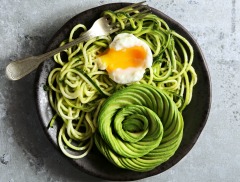Don't just meal plan... meal plan intelligently - with Meal Genius! Sign up for our free newsletter to get delicious recipes, sample meal plans and a whole lot more!
Plums
Plums are a relative of the peach, apricot and nectarine, with about 20 varieties readily available in the United States.
European-type plums are small, oval-shaped fruits with blue or purple skin and golden yellow flesh. The Japanese varieties are almost perfectly round with red-black or crimson skin and yellow or reddish flesh. Santa Rosa and Red Beaut are the most common Japanese varieties.
Along with providing a good source of vitamin C, plums are also a low glycemic food packed with antioxidants and anthocyanins.
Glycemic Index=39
Glycemic Load=5
Antioxidant Score (ORAC)=7,581
The Benefits
- Special diets: Autoimmune Paleo Diet, Elimination Diet, Gluten-Free Diet, Gluten-Free/Dairy-Free Diet, Grain-Free Diet, Low Carb Diet, Low FODMAP Diet, Low Histamine Diet, Low Oxalate Diet, Low Starch Diet, Paleo Diet (Light), Paleo Diet (Strict), PCOS Diet, Pescetarian Diet, Primal Diet, Vegetarian Diet, Whole Food
- Excellent Source of:
- Good Source of: VitaminC
- Preferences: No Fish, No Red Meat, No Pork, No Eggs, No Shellfish, No Gluten, No Nuts, No Seeds, No Soy, No Dairy, No Poultry, No Molds, No Citrus, No Coconut, No Pseudograins, No Corn, No Yeast, No Peanuts, No Nightshade, No Legumes, No Grains, Low Carbohydrate, Low Cholesterol, Low Fat, Low Sodium, Low Saturated Fat
Related Foods
Related Nutrients
Selecting and Storing
Plums should be plump and deeply colored. Ripe plums yield to gentle pressure, and can be refrigerated for up to three days.









